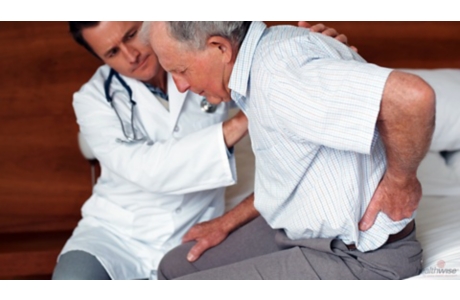Cervical Spinal Stenosis
Conditions Basics
What is cervical spinal stenosis?
Cervical spinal stenosis is the narrowing of the spinal canal in the neck.
The spinal canal is the open area in the bones (vertebrae) that make up the spinal column. The spinal cord is a collection of nerves that runs through the spinal canal from the base of the brain to the lower back. These nerves allow us to feel, to move, and to control the bowel and bladder and other body functions.
The seven vertebrae between the head and the chest make up the cervical spine. In cervical spinal stenosis, the spinal canal narrows and can squeeze and compress the nerve roots where they leave the spinal cord, or it may compress or damage the spinal cord itself.
Squeezing the nerves and cord in the cervical spine can change how the spinal cord functions and cause pain, stiffness, numbness, or weakness in the neck, arms, and legs. It can also affect your control of your bowels and bladder.

When the spinal canal becomes narrower (stenosis), the spinal cord and/or nerve roots get squeezed.
What causes it?
Cervical spinal stenosis is usually caused by age-related changes in the shape and size of the spinal canal and so is most common in people older than age 50. The aging process can cause a "bulging of the discs"—the spongy discs between the bones of the spine bulge out farther than normal—or a thickening of tissues that connect bones (ligaments). Aging can also lead to destruction of tissues that cover bones (cartilage) and excessive growth of the bones in joints. These conditions can narrow the spinal canal (spinal stenosis).
In rare cases, the spinal canal is narrowed from birth because of the way the bones are formed.
What are the symptoms?
Many people older than age 50 have some narrowing of the spinal canal but do not have symptoms. Cervical spinal stenosis does not cause symptoms unless the spinal cord or nerves becomes squeezed. Symptoms usually develop gradually over a long period of time and may include:
- Stiffness, pain, numbness, or weakness in the neck, shoulders, arms, hands, or legs.
- Balance and coordination problems, such as shuffling or tripping while walking. Cervical spinal stenosis can be crippling if the spinal cord is damaged.
- Loss of bowel or bladder control (incontinence).
How is it diagnosed?
A diagnosis of cervical spinal stenosis usually is based on your history of symptoms and a physical exam. Your doctor will ask you if neck movements cause pain, numbness, or weakness. If cervical spinal stenosis is suspected, your doctor will recommend imaging tests of your neck and back to confirm the diagnosis and to see what is causing the narrowing of the spinal canal. Imaging tests that may be used include X-rays, magnetic resonance imaging (MRI), and computed tomography (CT) scans. Your doctor will use the results of tests, including imaging and blood tests, to eliminate other diseases—such as multiple sclerosis (MS) and vitamin B12 deficiency—as the cause of your symptoms.
How is cervical spinal stenosis treated?
In mild cases of spinal stenosis, symptoms can usually be controlled with medicine to relieve pain, exercise to maintain strength and flexibility, and physical therapy. If your symptoms are severe, you have progressive weakness of your muscles, or the pictures of your spine show that your spinal cord or nerves are being tightly squeezed, your doctor is likely to recommend decompressive surgery to relieve the pressure. This surgery may be done from the front or the back of the neck. It involves removing some of the disc, bone, and/or tissue that may be pressing on the nerve roots. Vertebrae are often joined together surgically (fused) to provide stability to the spine.
Credits
Current as of: July 17, 2023
Author: Healthwise Staff
Clinical Review Board
All Healthwise education is reviewed by a team that includes physicians, nurses, advanced practitioners, registered dieticians, and other healthcare professionals.
Current as of: July 17, 2023
Author: Healthwise Staff
Clinical Review Board
All Healthwise education is reviewed by a team that includes physicians, nurses, advanced practitioners, registered dieticians, and other healthcare professionals.
This information does not replace the advice of a doctor. Healthwise, Incorporated, disclaims any warranty or liability for your use of this information. Your use of this information means that you agree to the Terms of Use. Learn how we develop our content.






